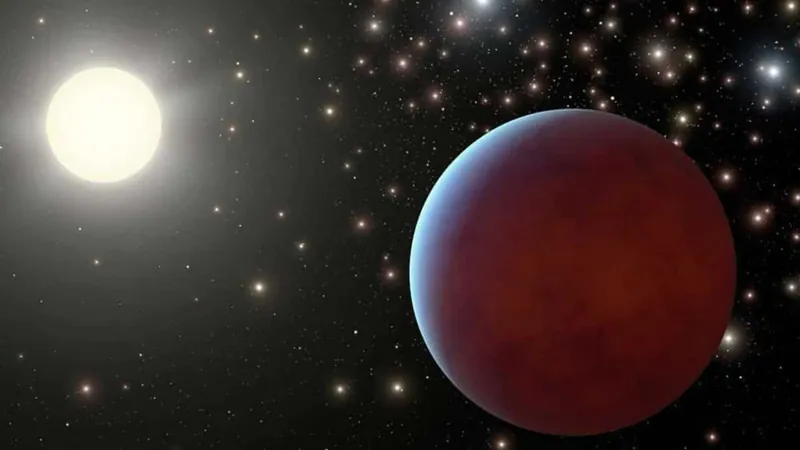
JWST Unveils Never-Before-Seen Asymmetrical Atmosphere on Exoplanet WASP-107b!
2024-09-25
Introduction
NASA’s groundbreaking James Webb Space Telescope (JWST) has made an astonishing discovery on the exoplanet WASP-107b—a finding that is revolutionizing our understanding of exoplanetary atmospheres. For the first time in history, astronomers have detected a striking east-west asymmetry in the atmosphere of this distant world, an anomaly that stands apart from anything observed in our own solar system or among existing exoplanets!
Research Collaboration
This revolutionary research, spearheaded by a team from the University of Arizona and an international collaboration of scientists, reveals that WASP-107b, while comparable in size to Jupiter, is only a fraction of its mass—about one-tenth of Jupiter's. The asymmetrical atmospheric property indicates a significant variation between the atmospheric conditions of its eastern and western sides, challenging existing paradigms in exoplanet science.
Significance of Findings
The leads of this significant finding, including Matthew Murphy, a graduate student at the University of Arizona’s Steward Observatory, emphasize the breakthrough nature of this observation. Murphy stated, “This is the first time the east-west asymmetry of any exoplanet has been observed as it transits its star from space.”
Implications of Asymmetry
So, what does this asymmetry imply? It suggests that the temperature, pressure, and even cloud characteristics diverge markedly between the two hemispheres—one permanently day-lit and the other locked in perpetual darkness due to the planet’s tidal locking with its star.
Observational Techniques
The JWST utilized advanced transmission spectroscopy techniques to observe the planet as it passed in front of its star, making it possible for researchers to differentiate signals between the eastern and western atmospheric sides. This critical technology has allowed scientists to directly study specific processes taking place within WASP-107b's atmosphere, revealing a trove of new data that could change our approach to understanding alien worlds.
Characteristics of WASP-107b
With an estimated surface temperature soaring around 890 degrees Fahrenheit (470 degrees Celsius), WASP-107b is characterized by its incredibly low density, leading to an inflated atmosphere unlike any other exoplanet. Murphy noted, “We don’t have anything like it in our solar system; it is truly unique among the exoplanet population.”
Expert Opinions
Co-author Thomas Beatty, an assistant professor of astronomy at the University of Wisconsin-Madison, further underlined the significance of this observation: “This is really the first time that we’ve seen these types of asymmetries directly through transmission spectroscopy from space.”
Conclusion
With this discovery, the JWST continues to push the boundaries of our extraterrestrial knowledge, potentially setting the stage for future explorations of planetary atmospheres. What else might we unveil in the mysteries of the cosmos? Stay tuned, as the future of astronomy looks more exciting than ever!

 Brasil (PT)
Brasil (PT)
 Canada (EN)
Canada (EN)
 Chile (ES)
Chile (ES)
 España (ES)
España (ES)
 France (FR)
France (FR)
 Hong Kong (EN)
Hong Kong (EN)
 Italia (IT)
Italia (IT)
 日本 (JA)
日本 (JA)
 Magyarország (HU)
Magyarország (HU)
 Norge (NO)
Norge (NO)
 Polska (PL)
Polska (PL)
 Schweiz (DE)
Schweiz (DE)
 Singapore (EN)
Singapore (EN)
 Sverige (SV)
Sverige (SV)
 Suomi (FI)
Suomi (FI)
 Türkiye (TR)
Türkiye (TR)